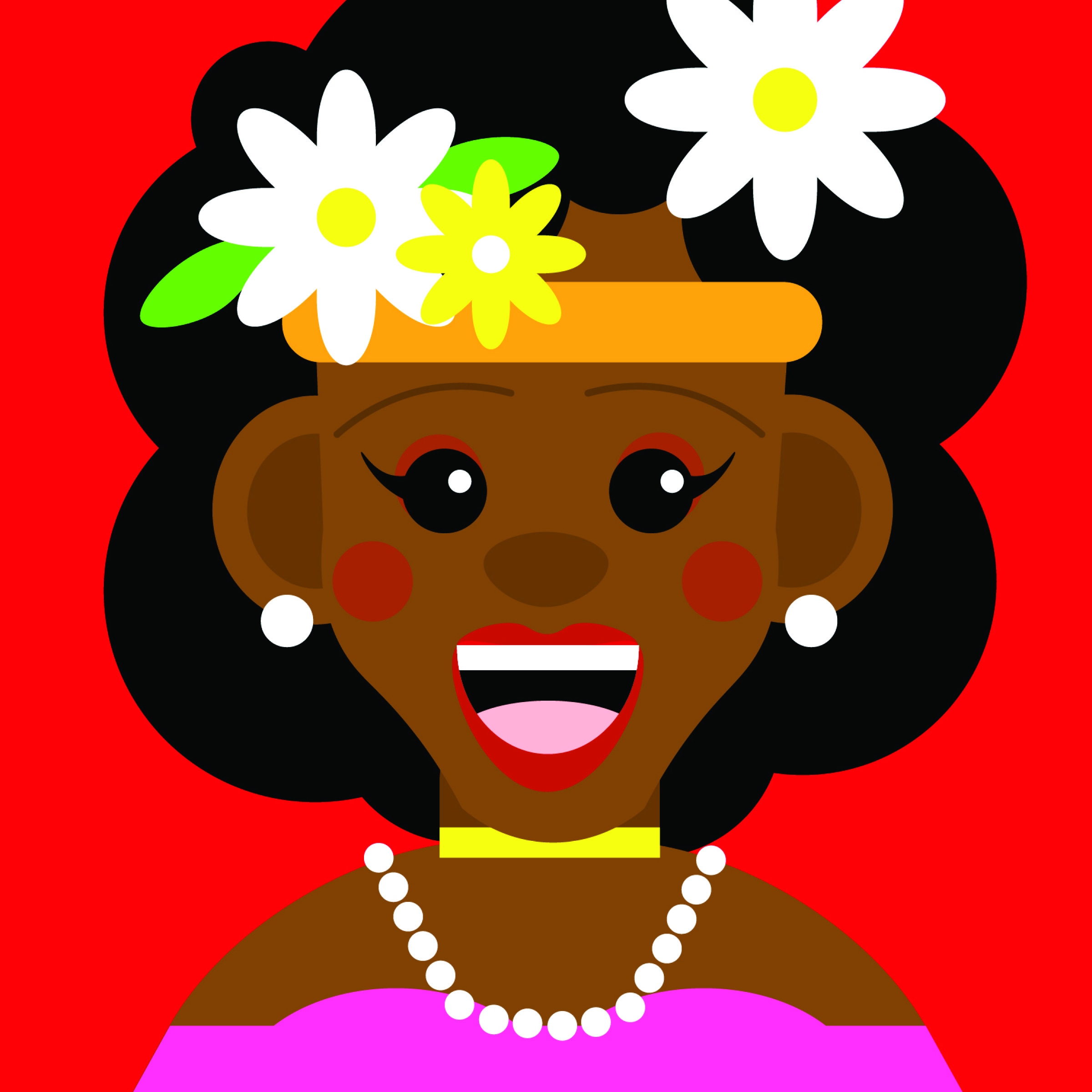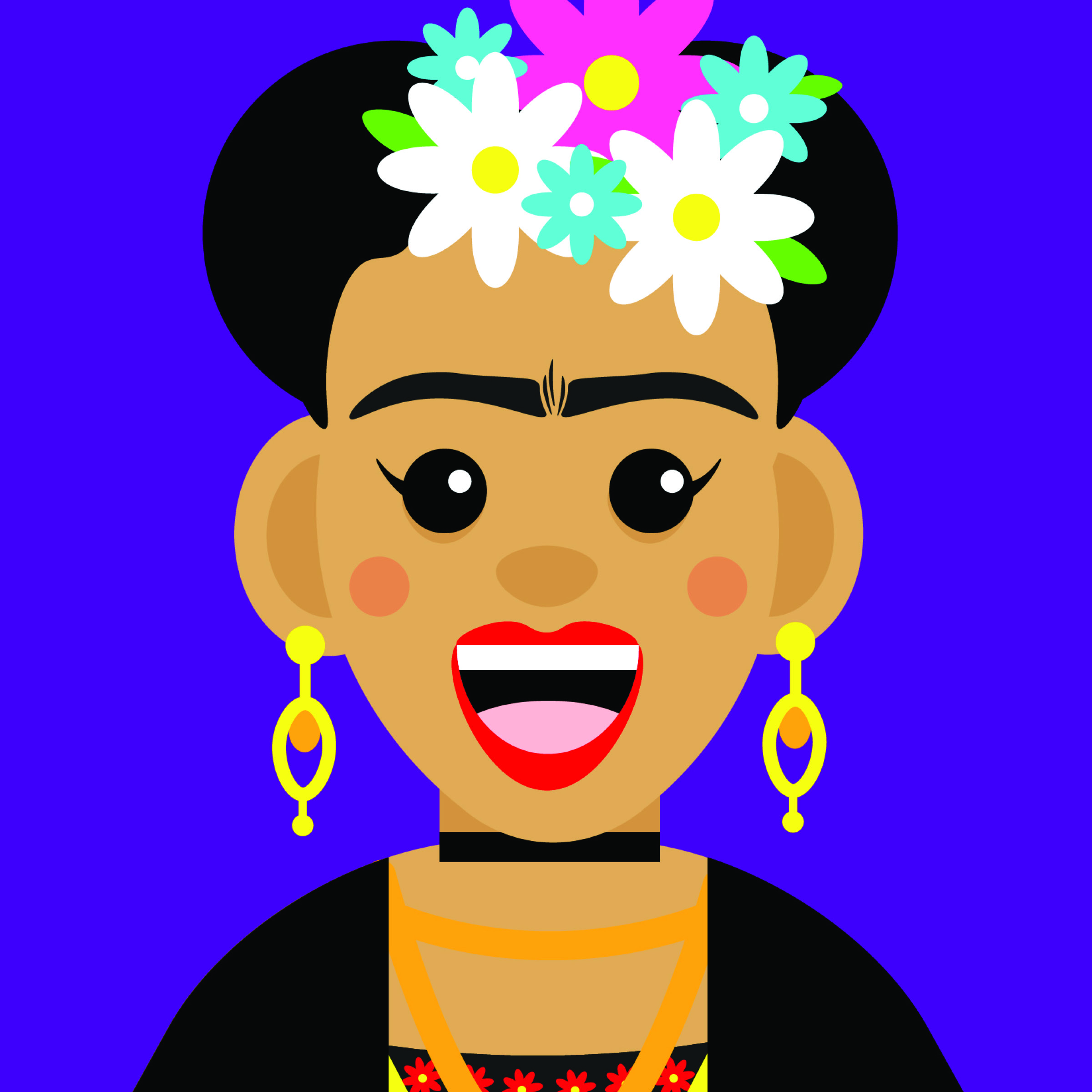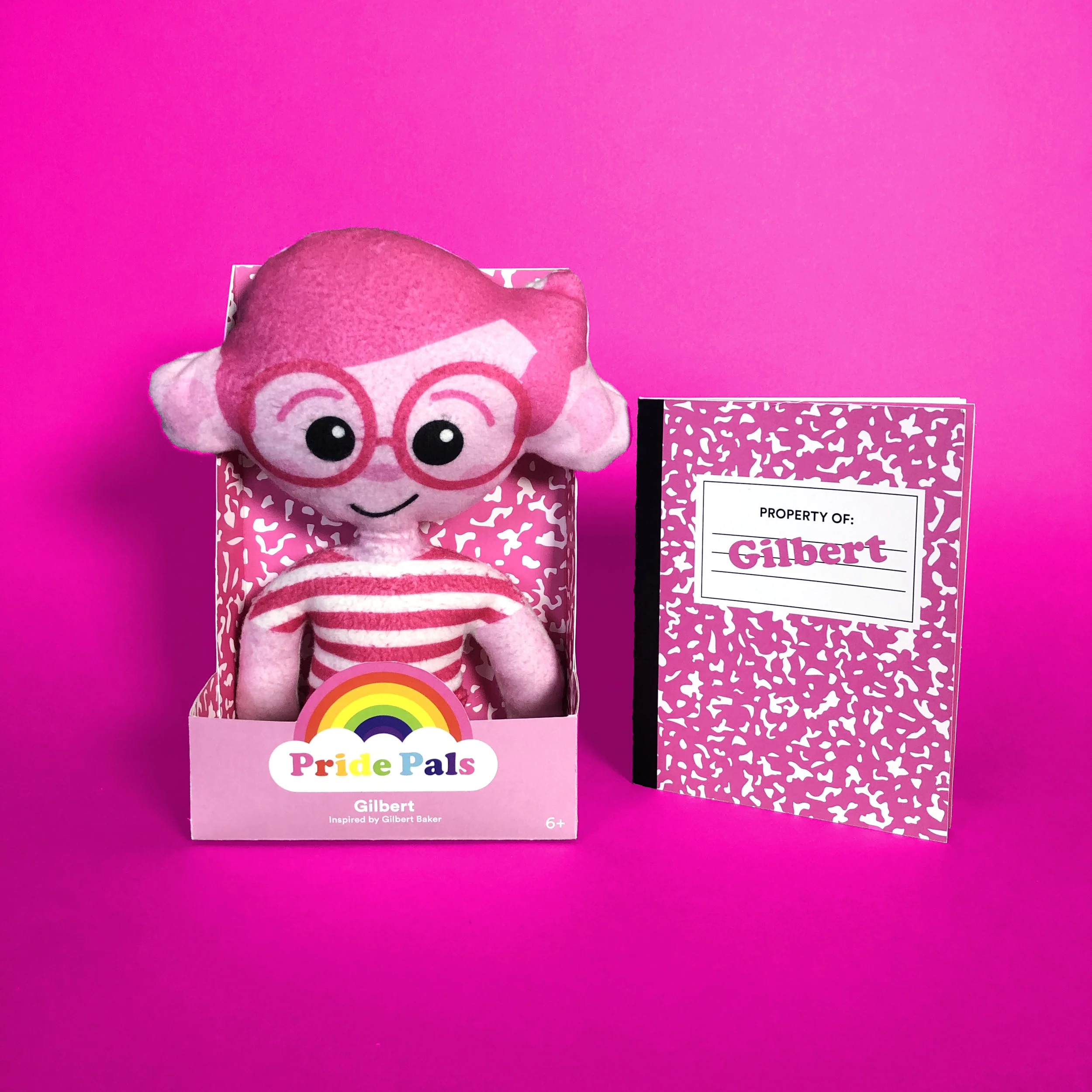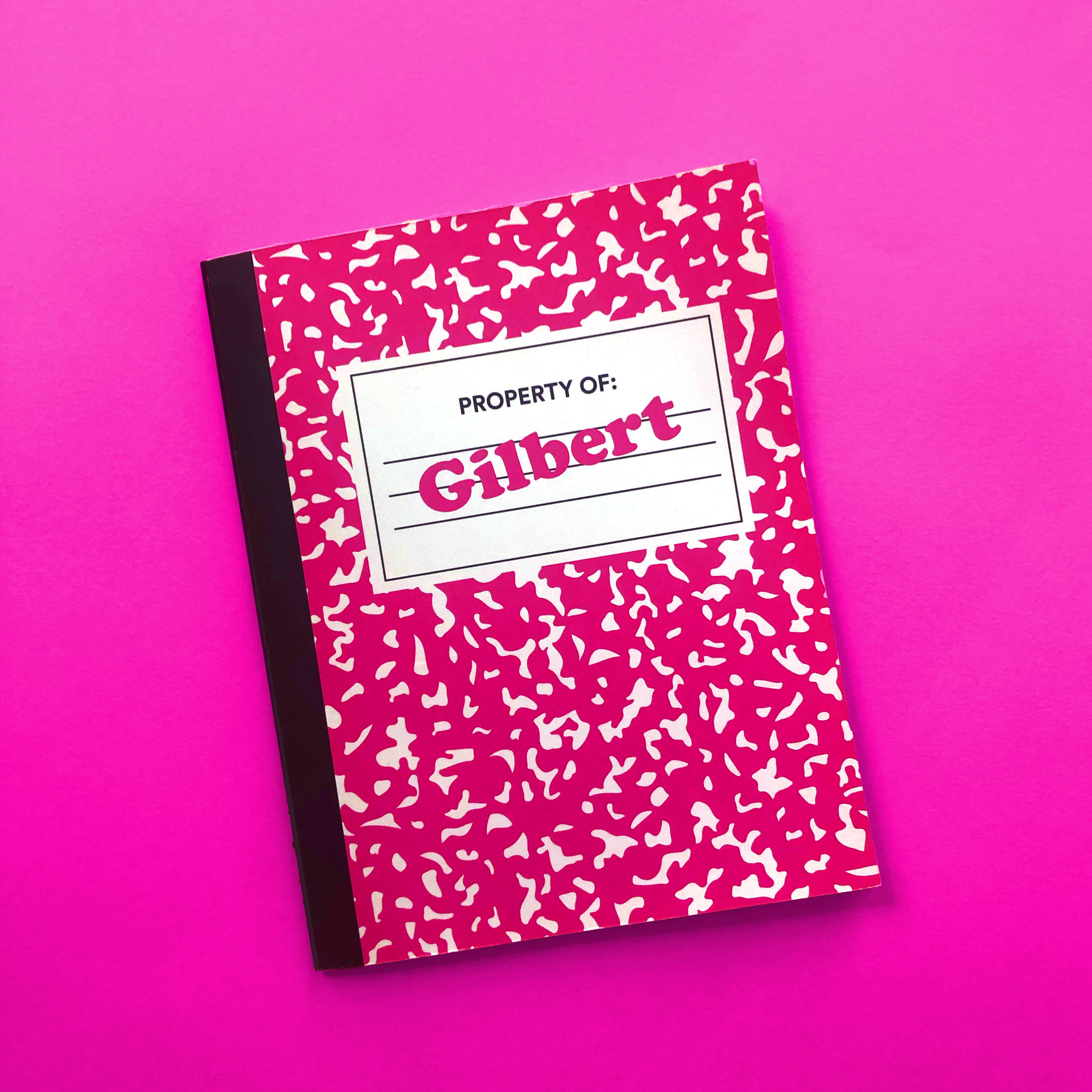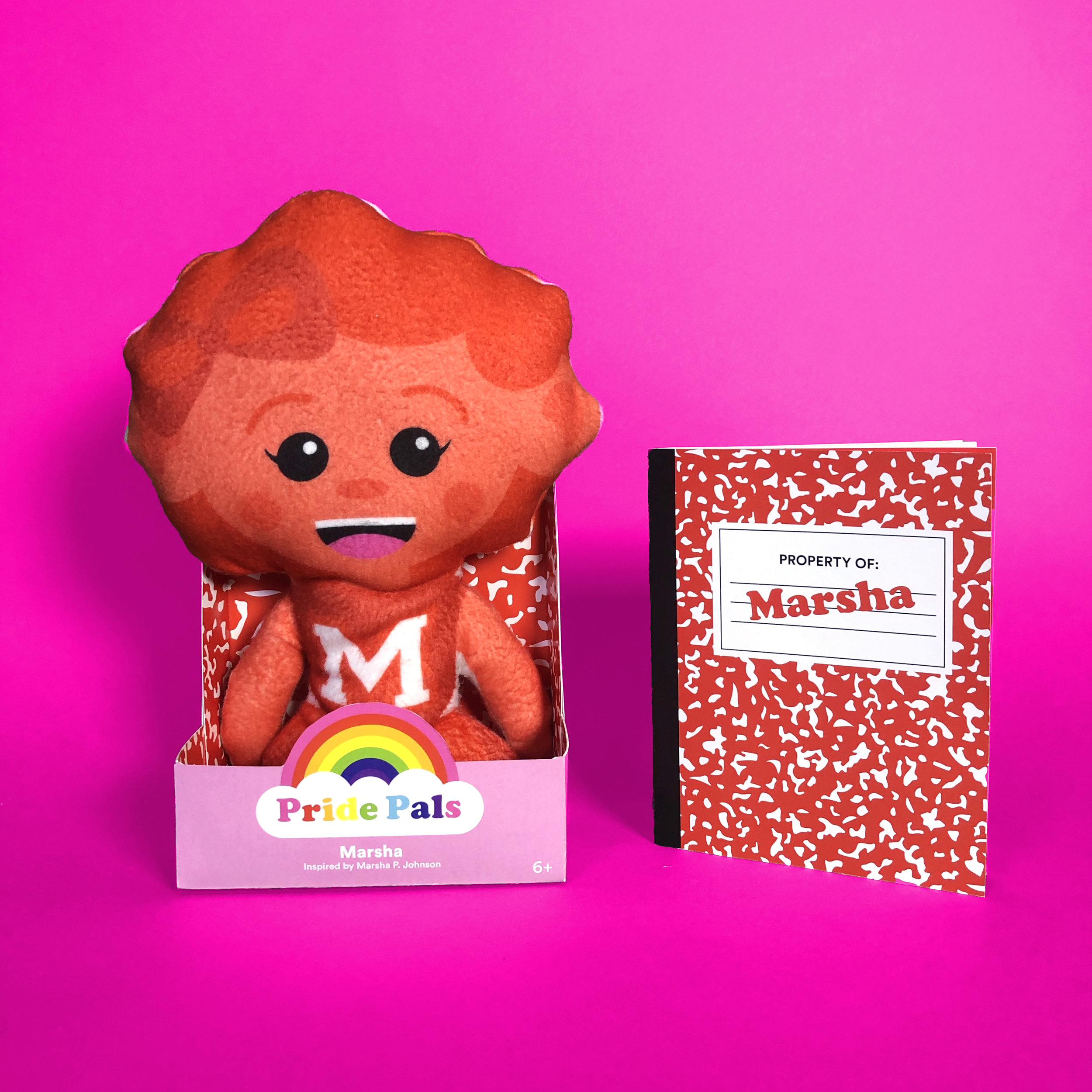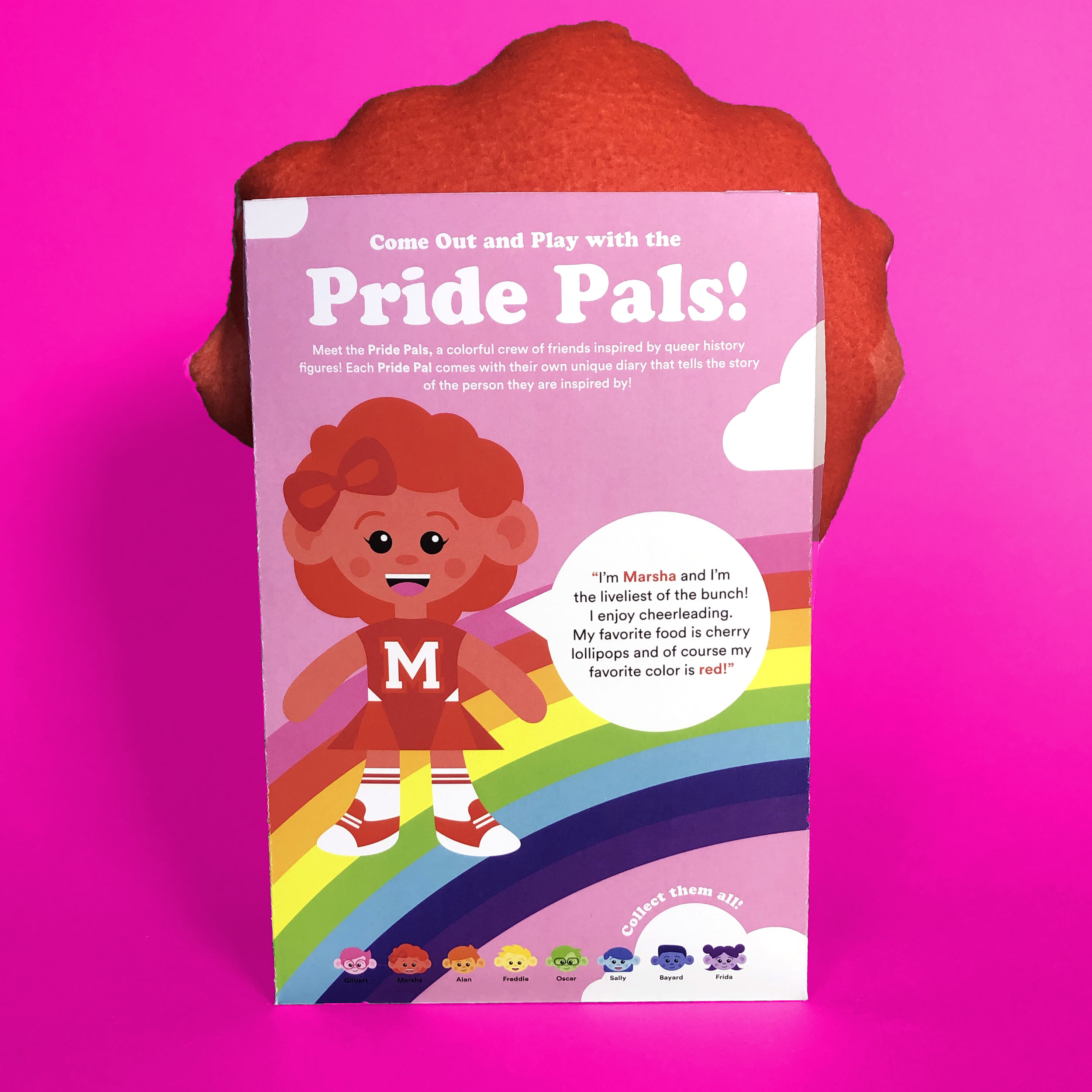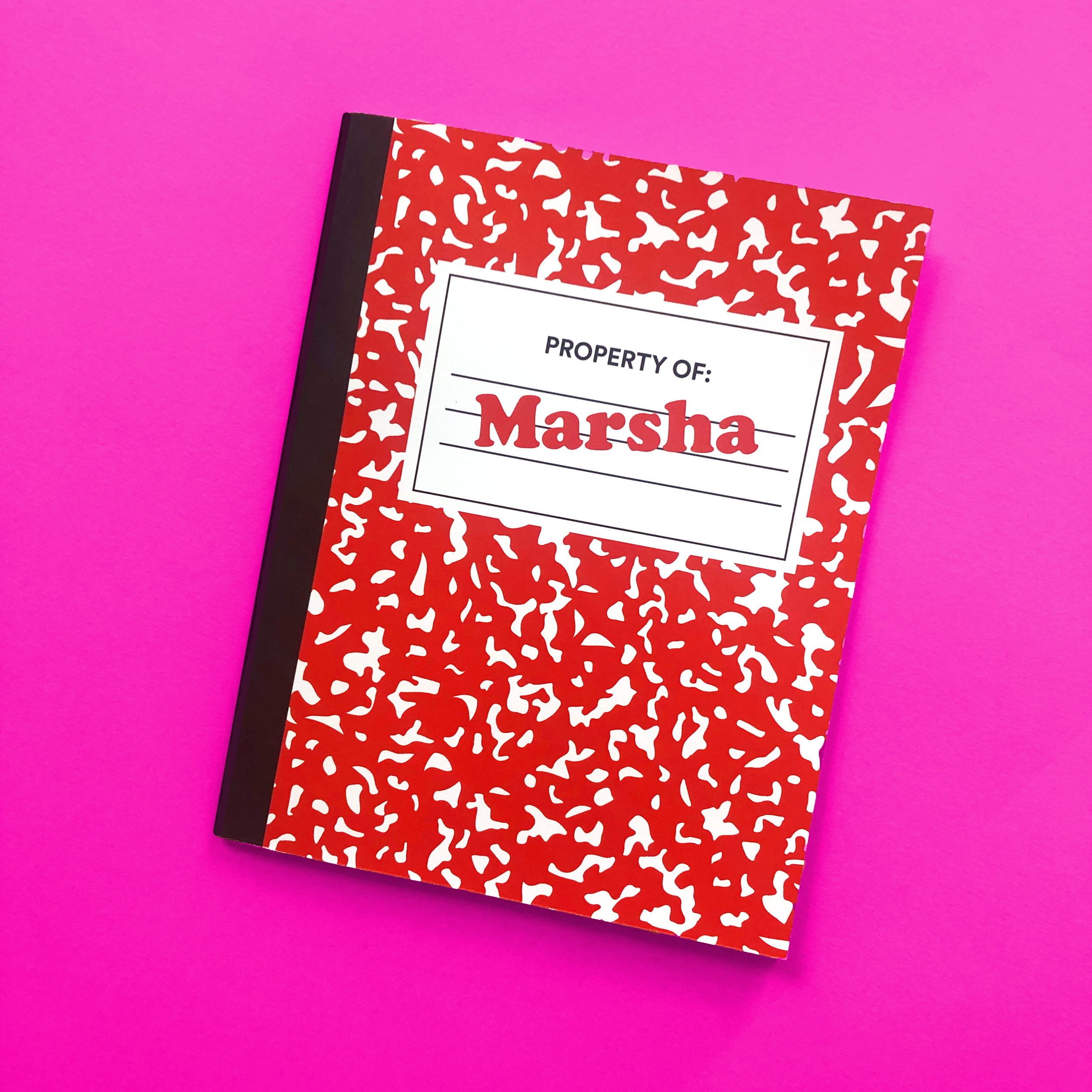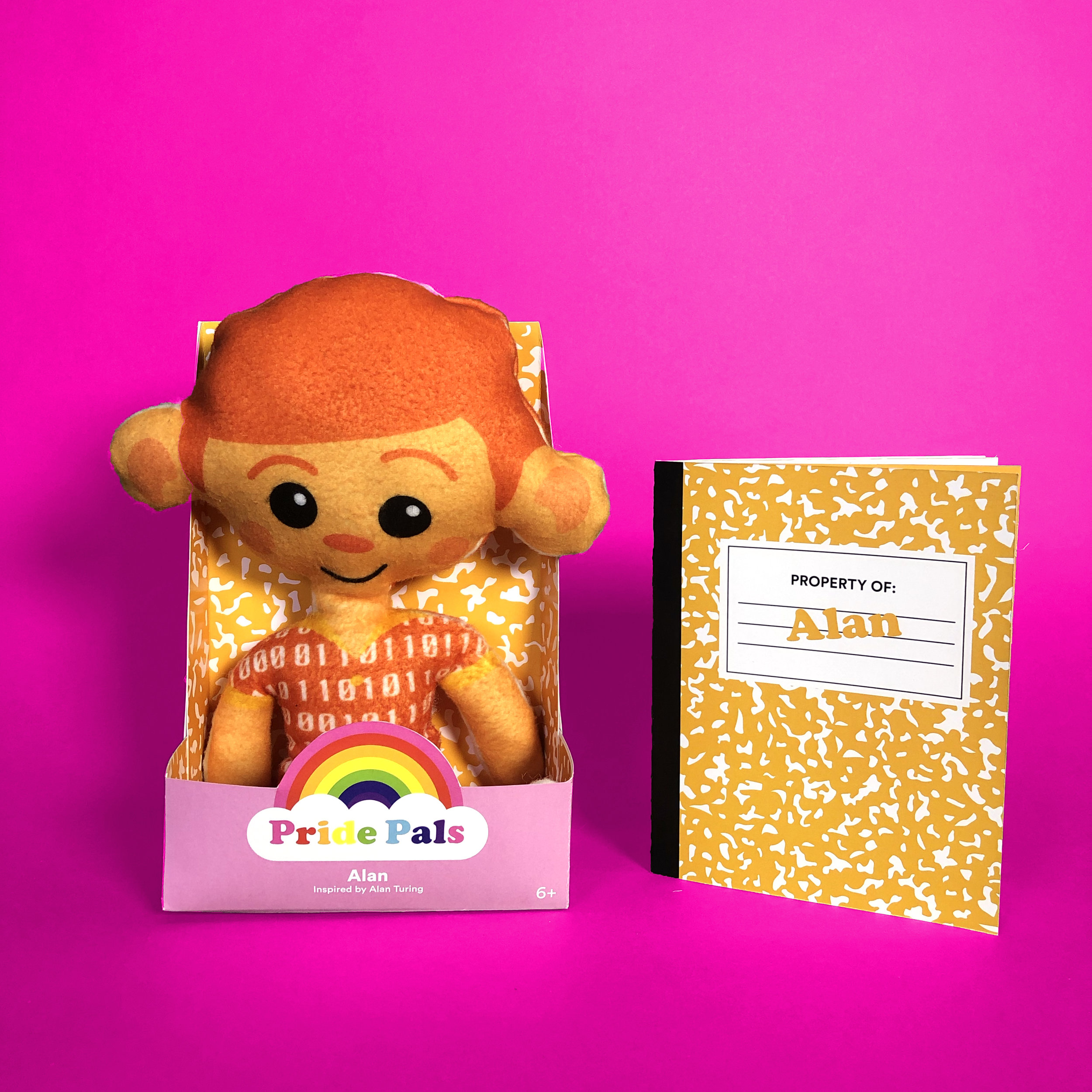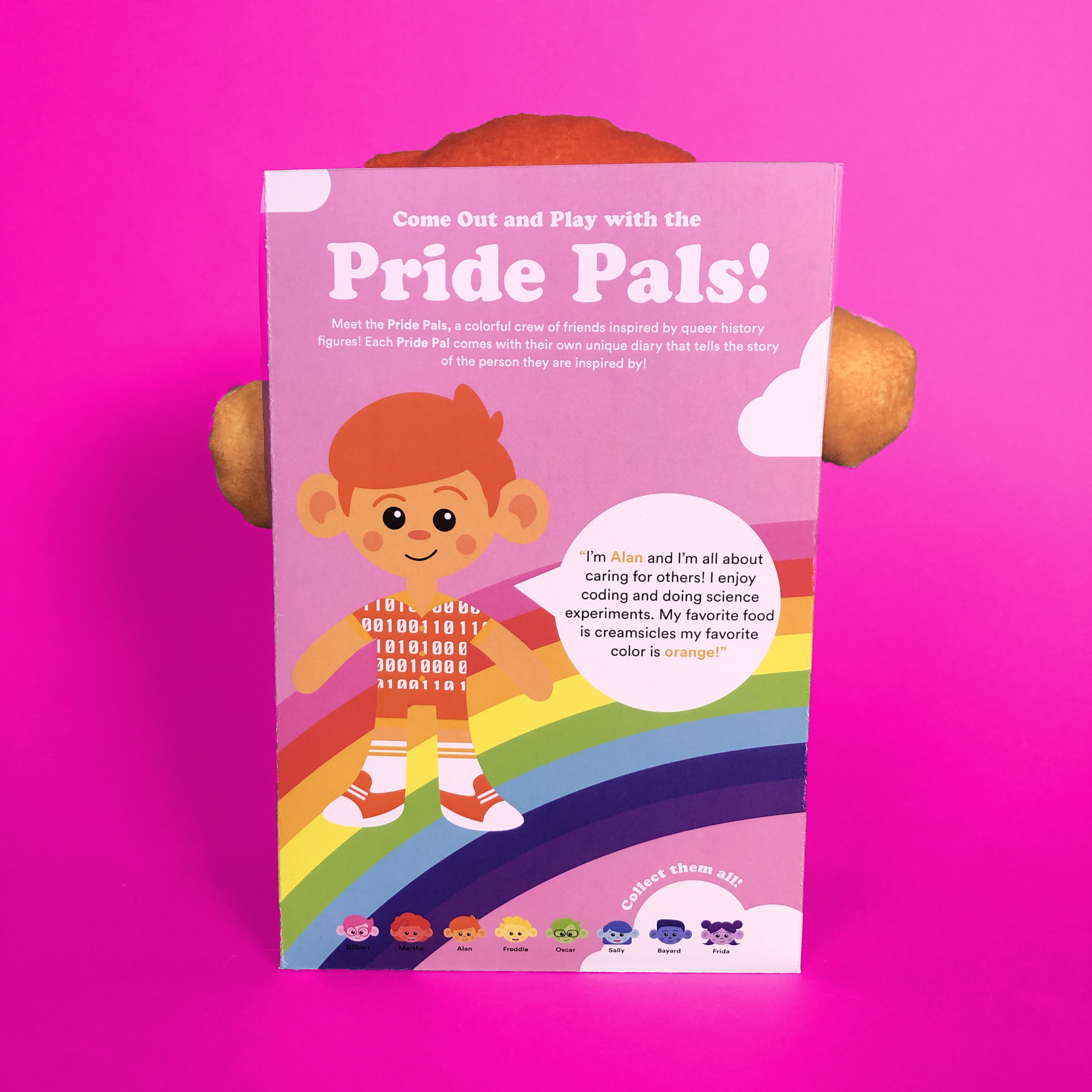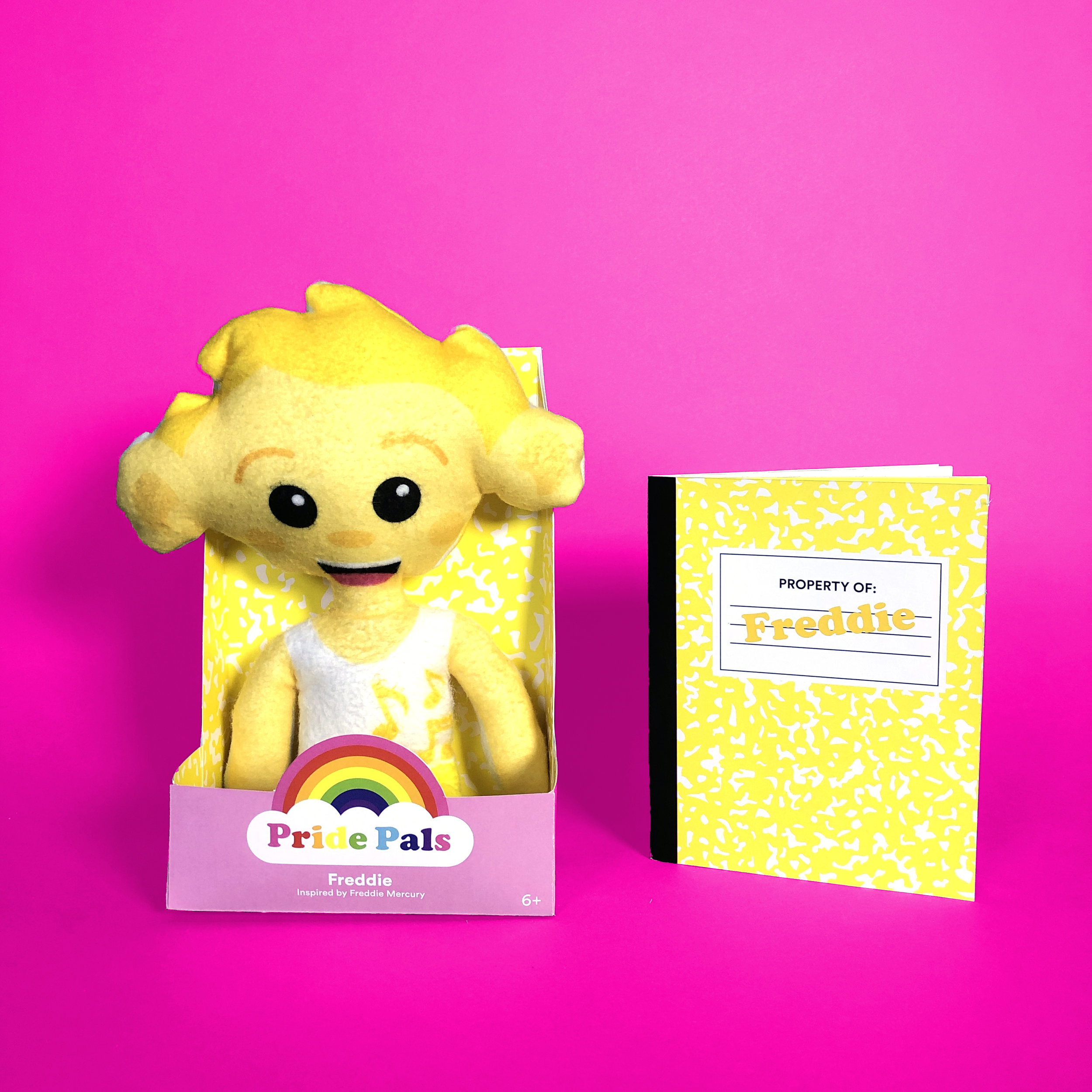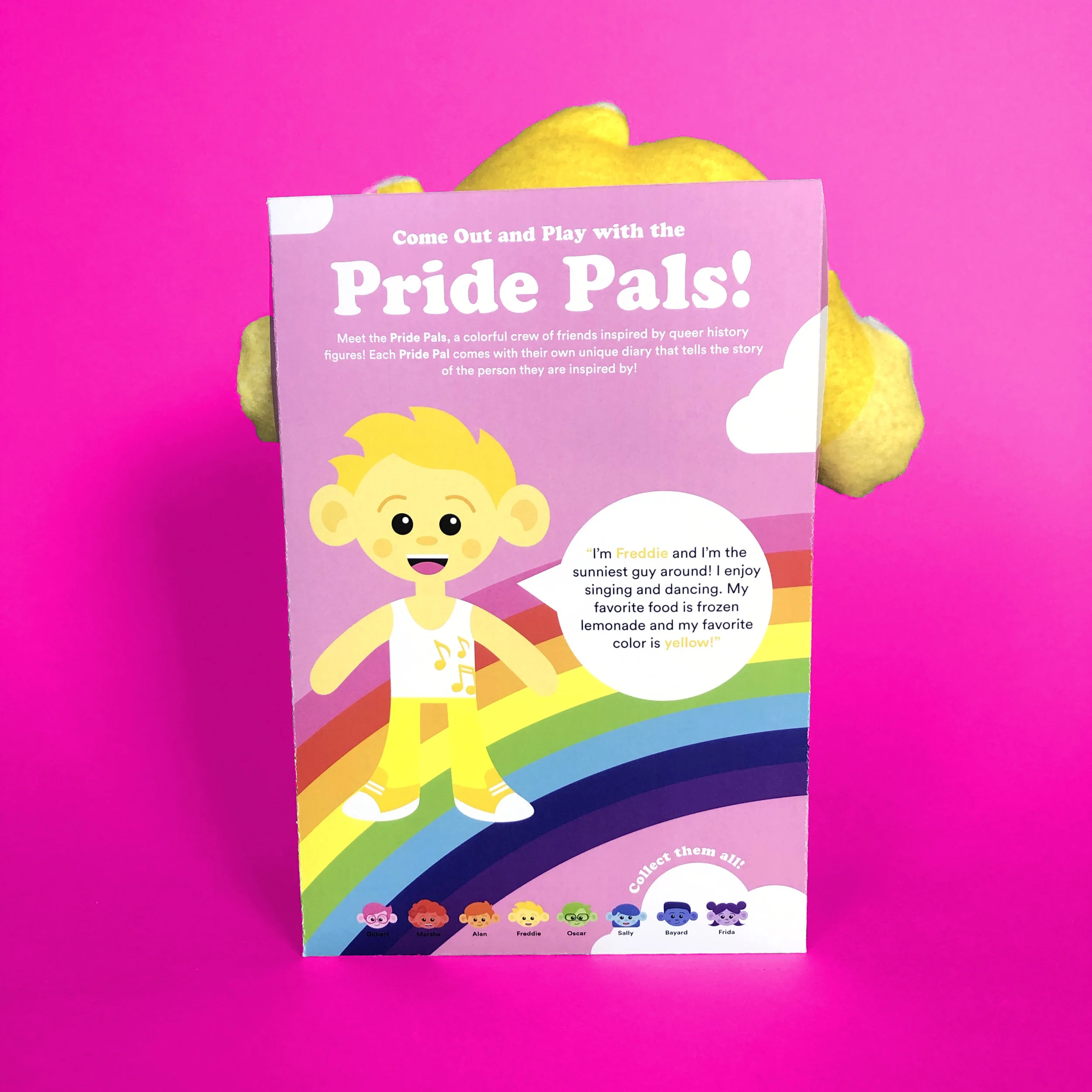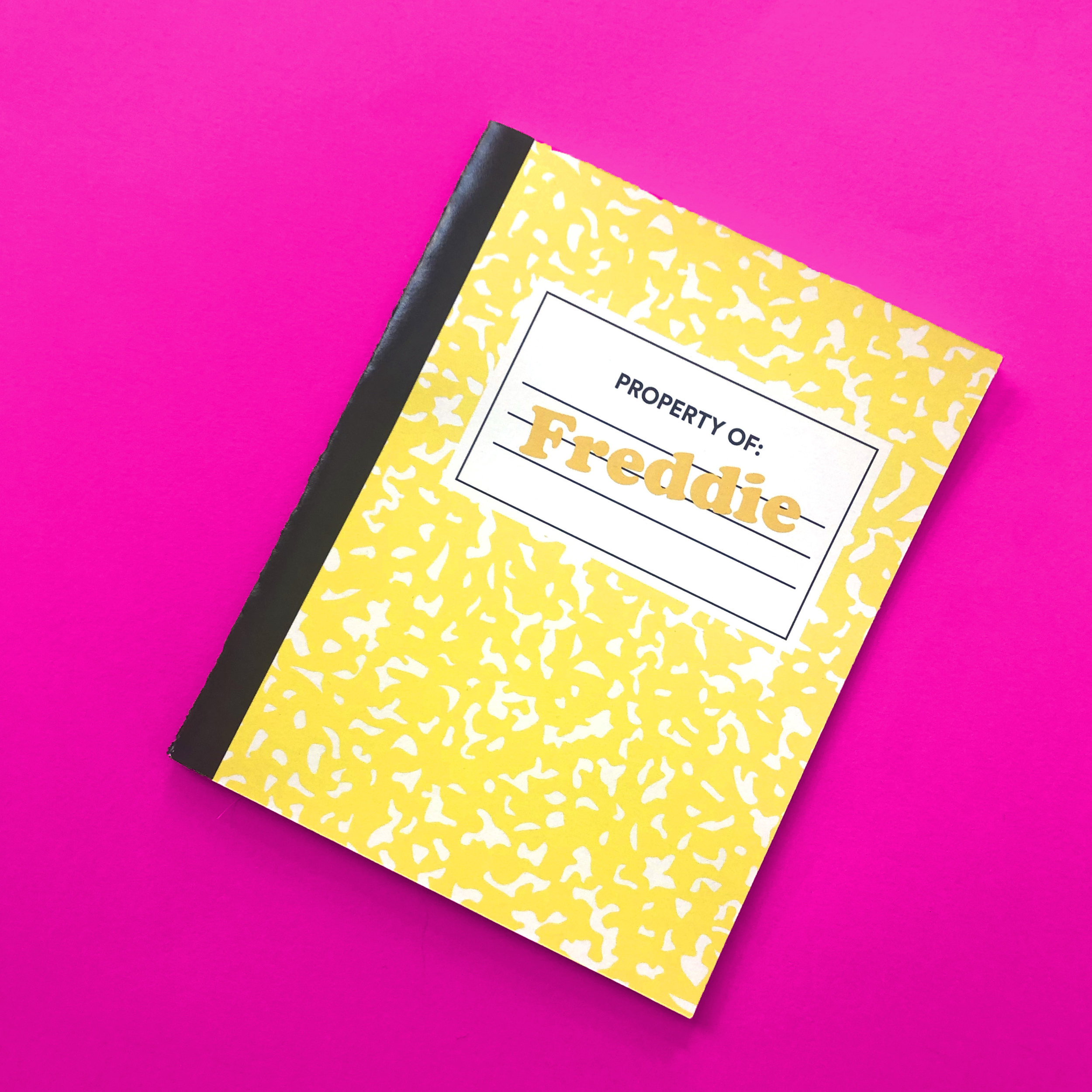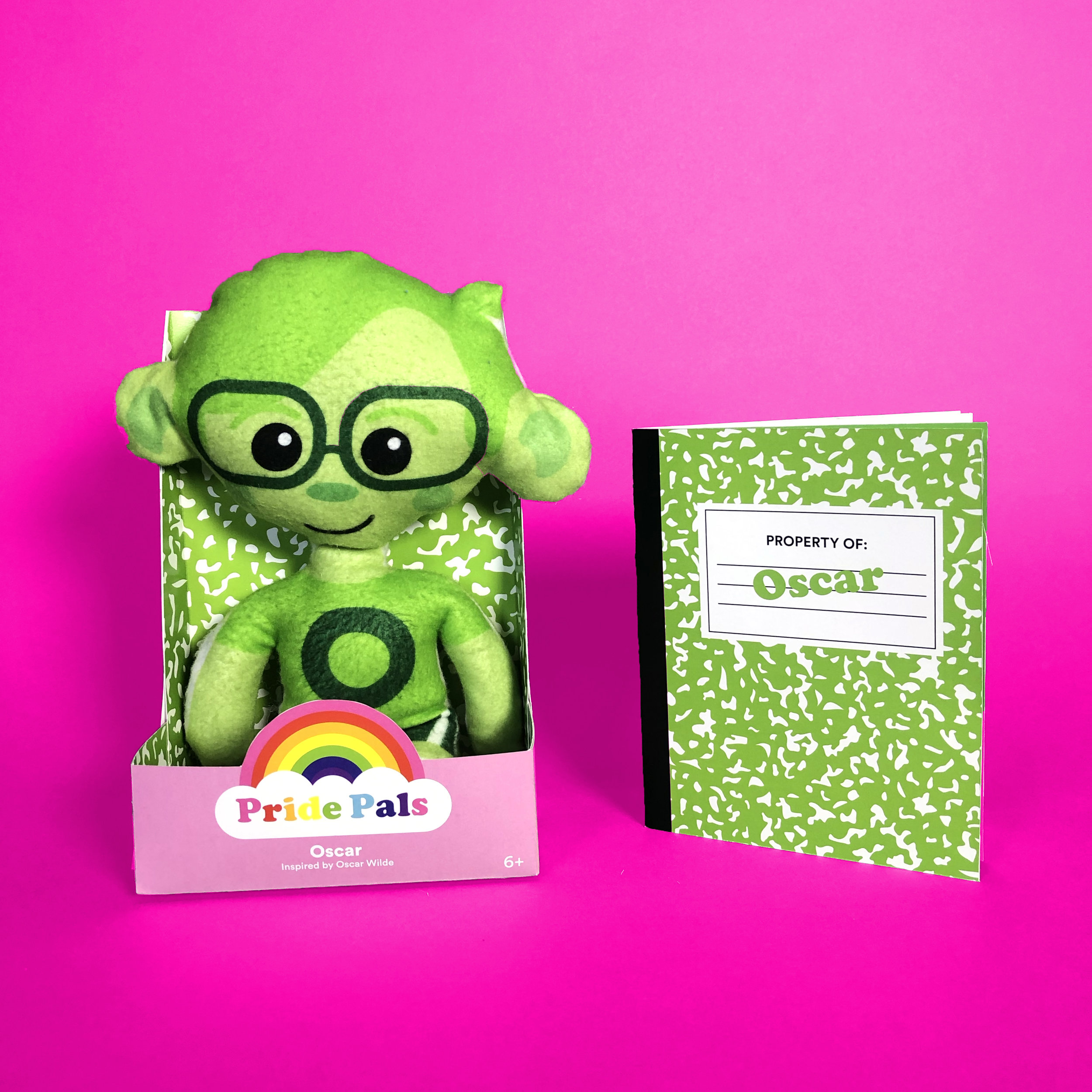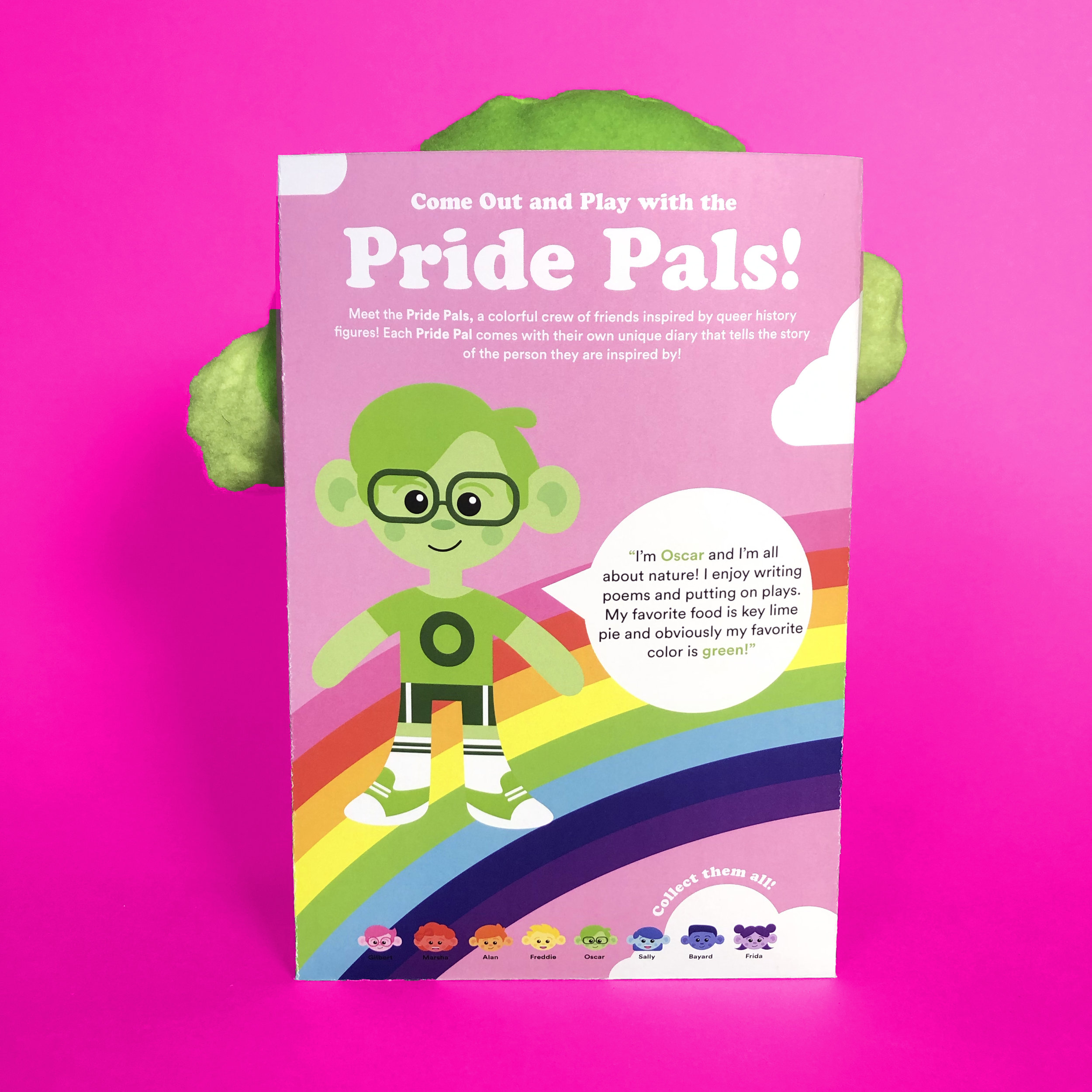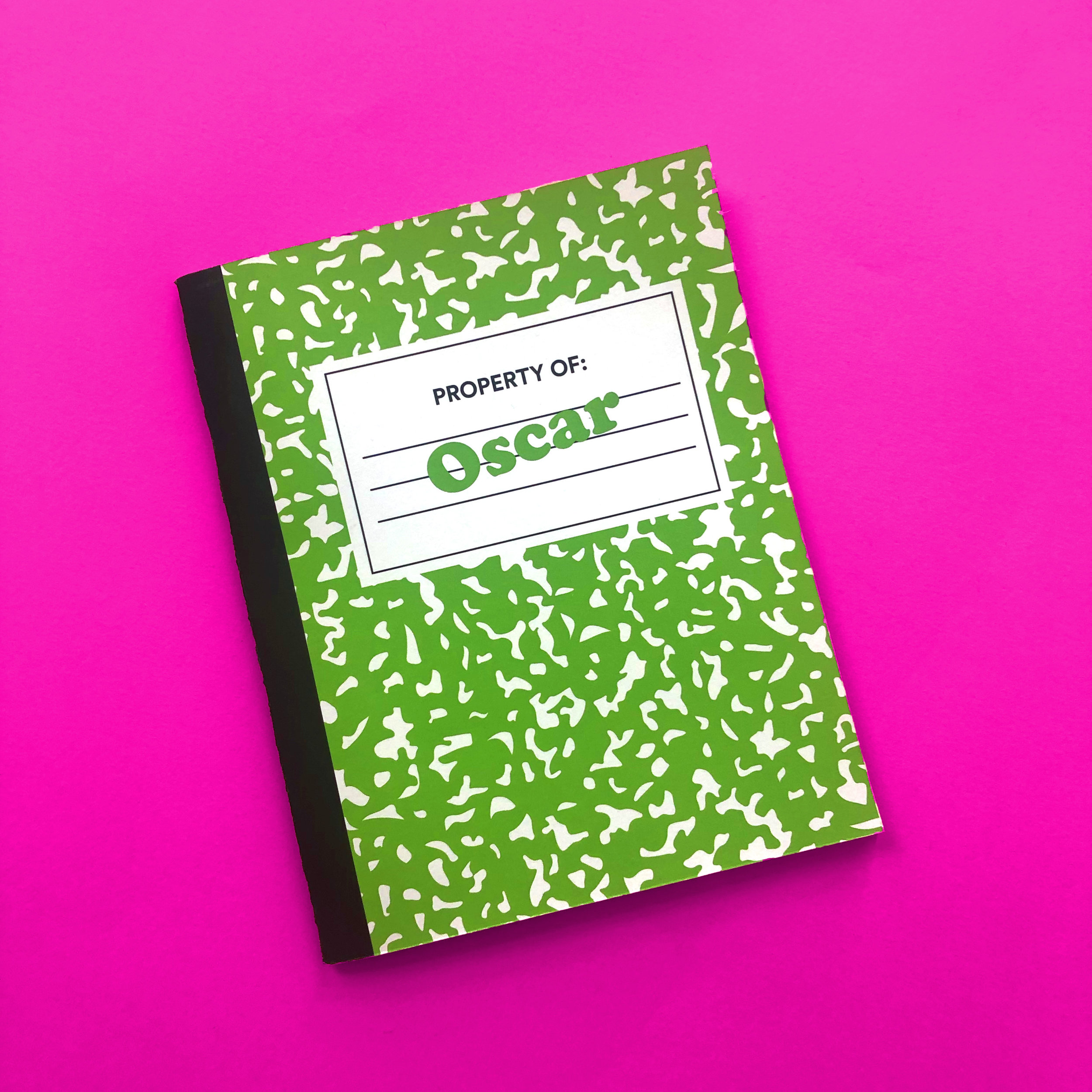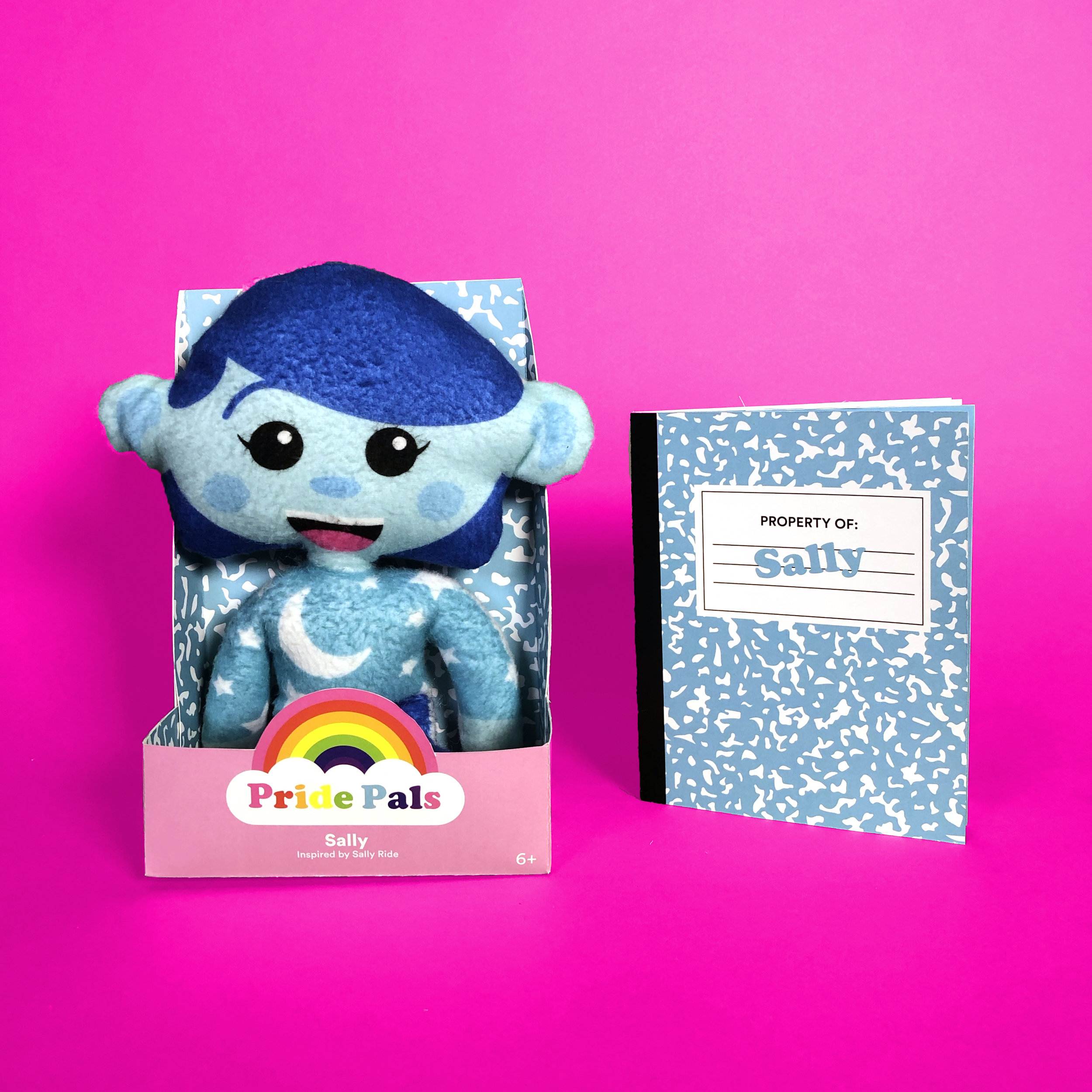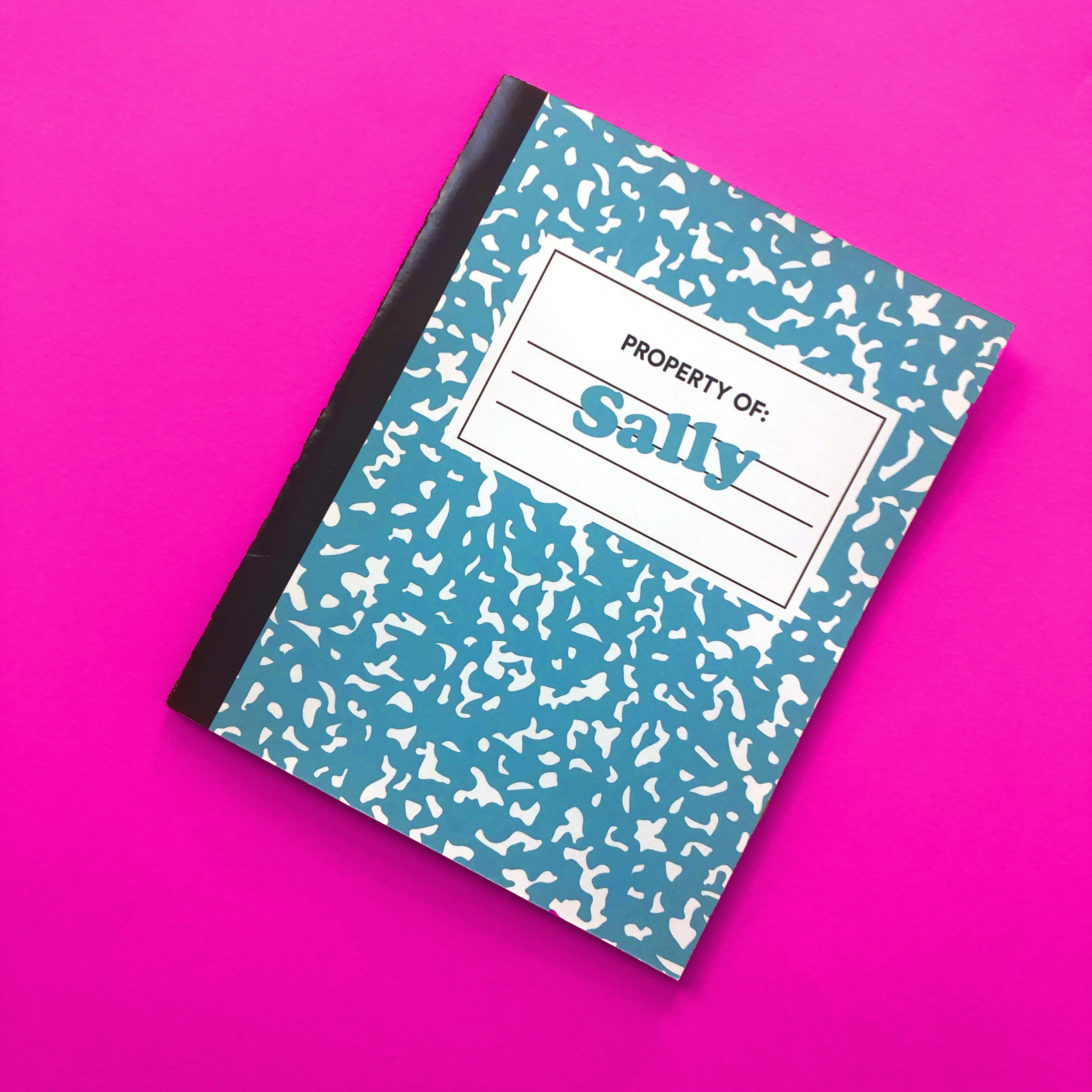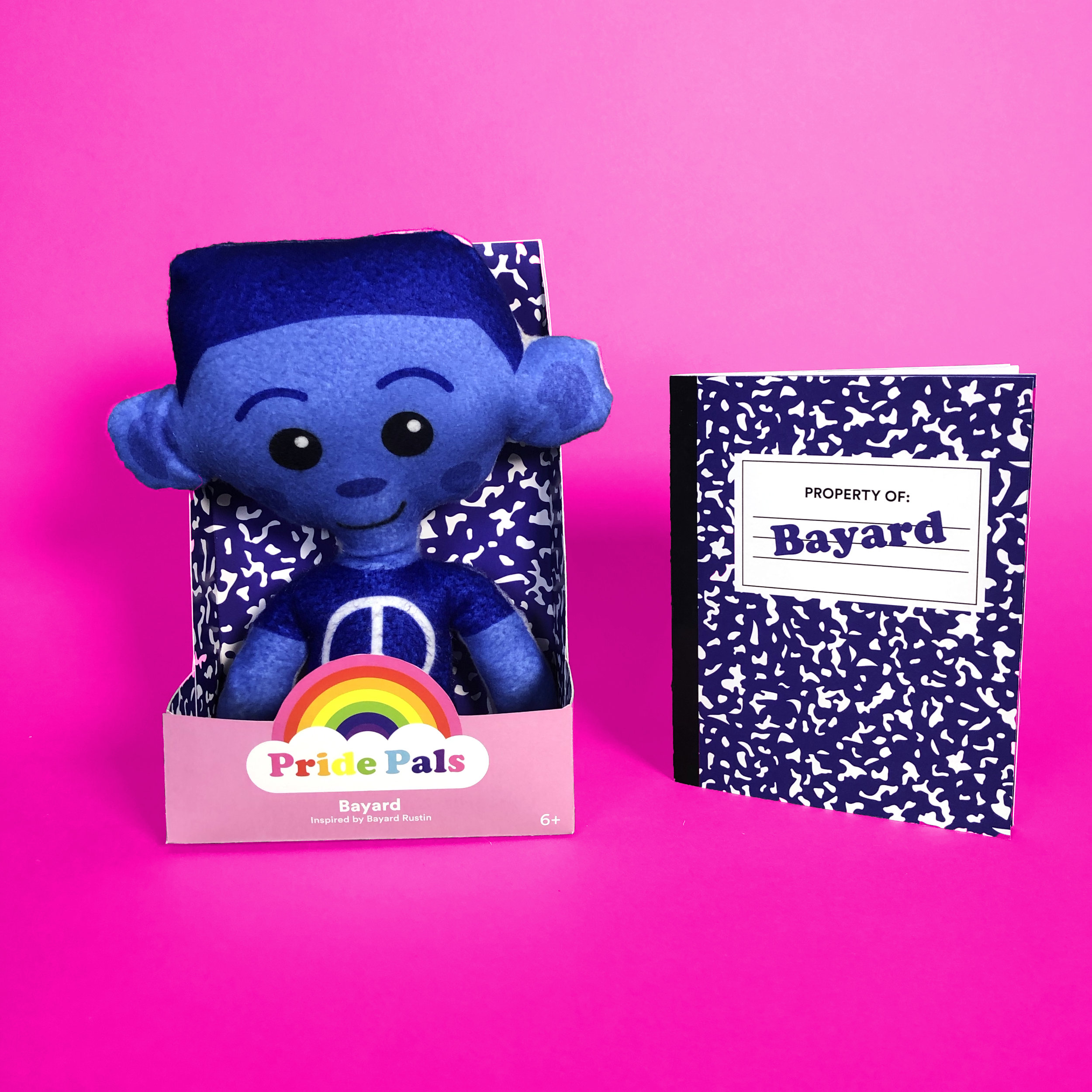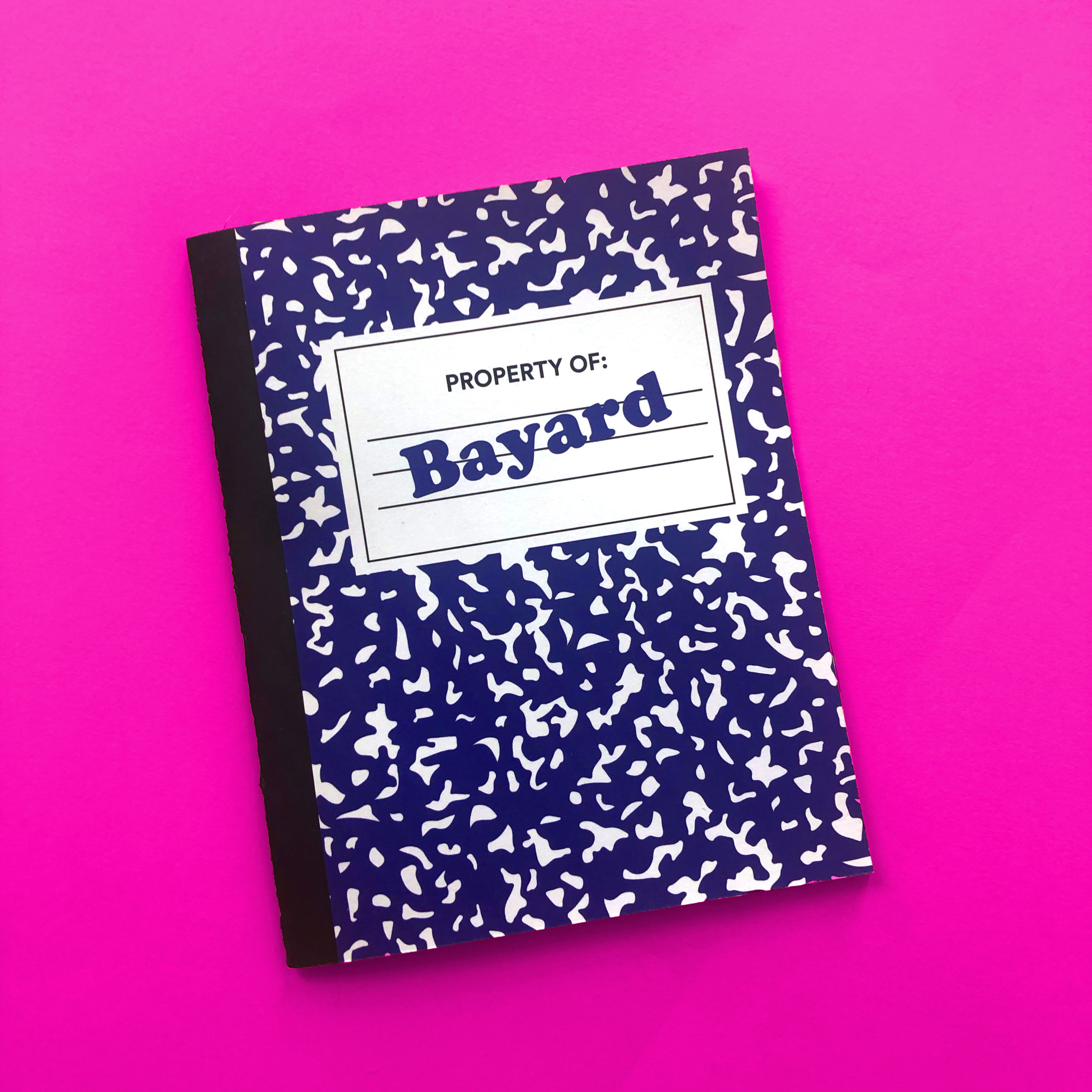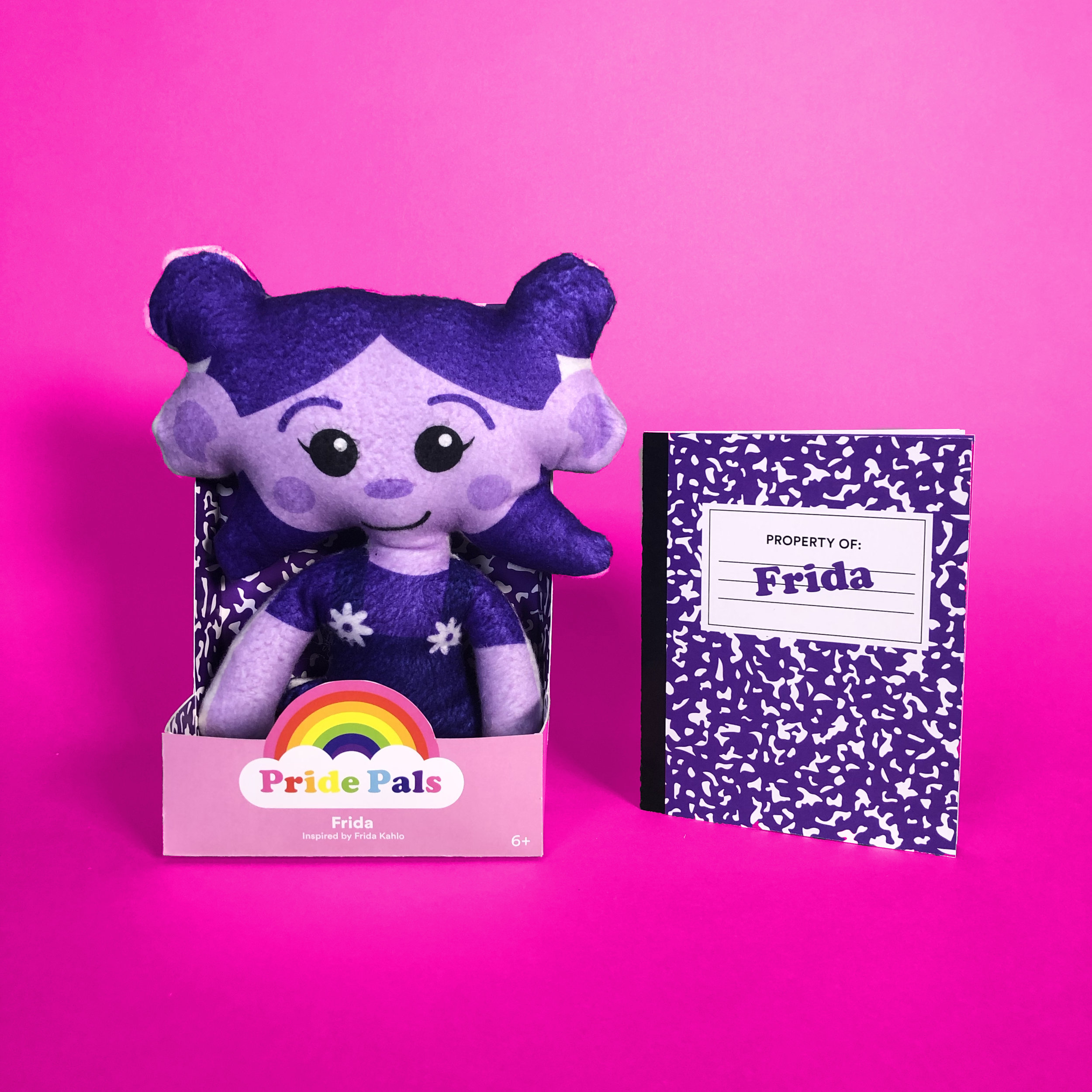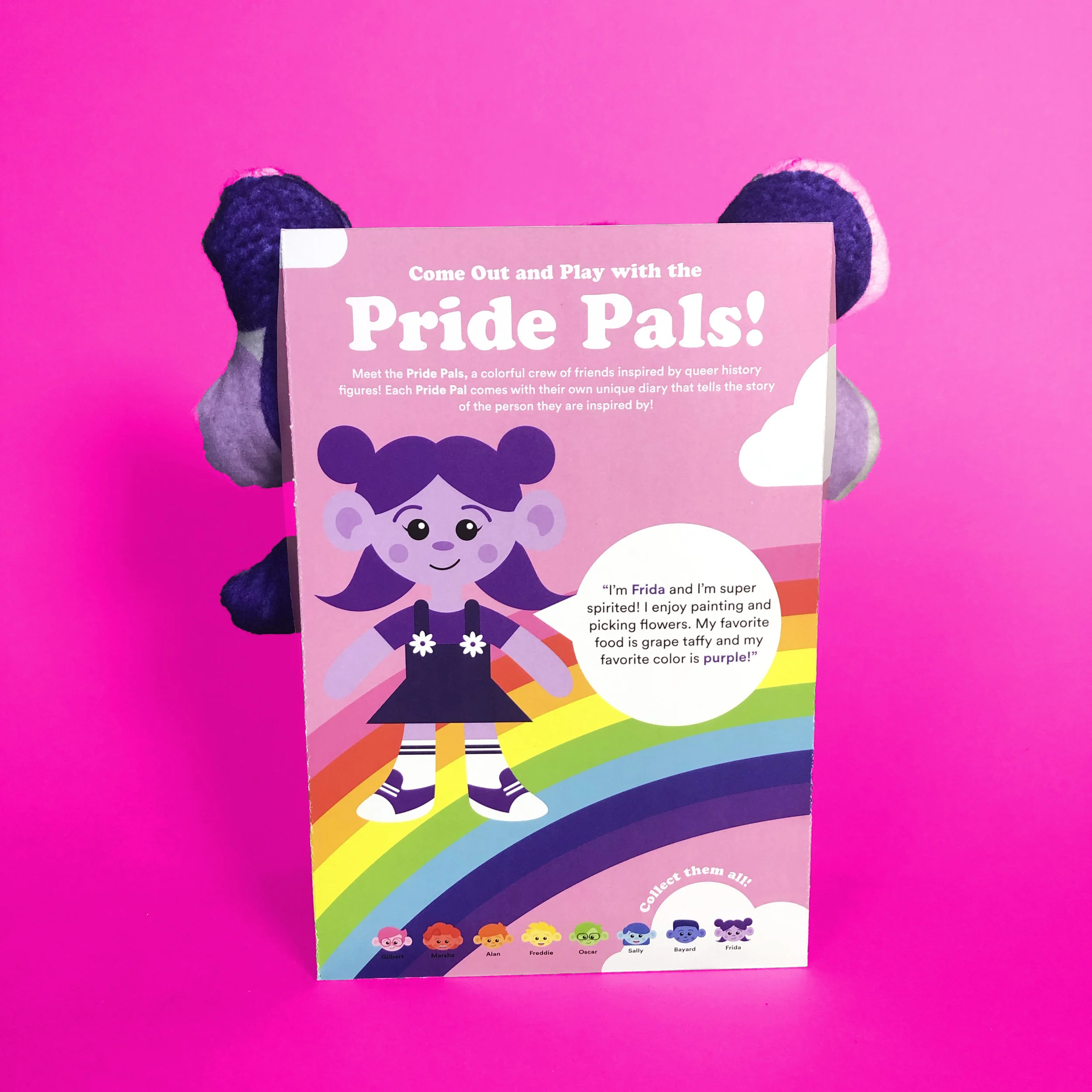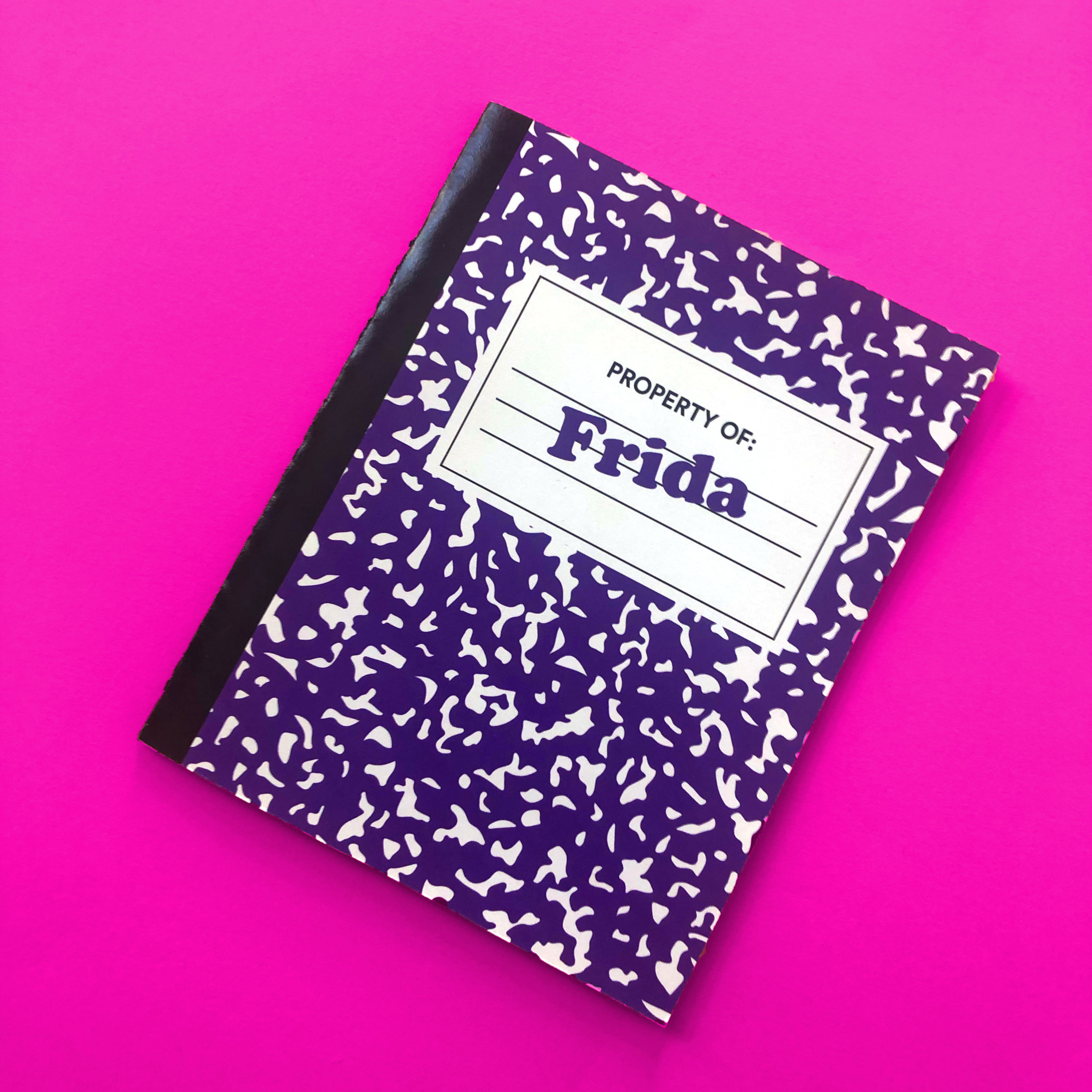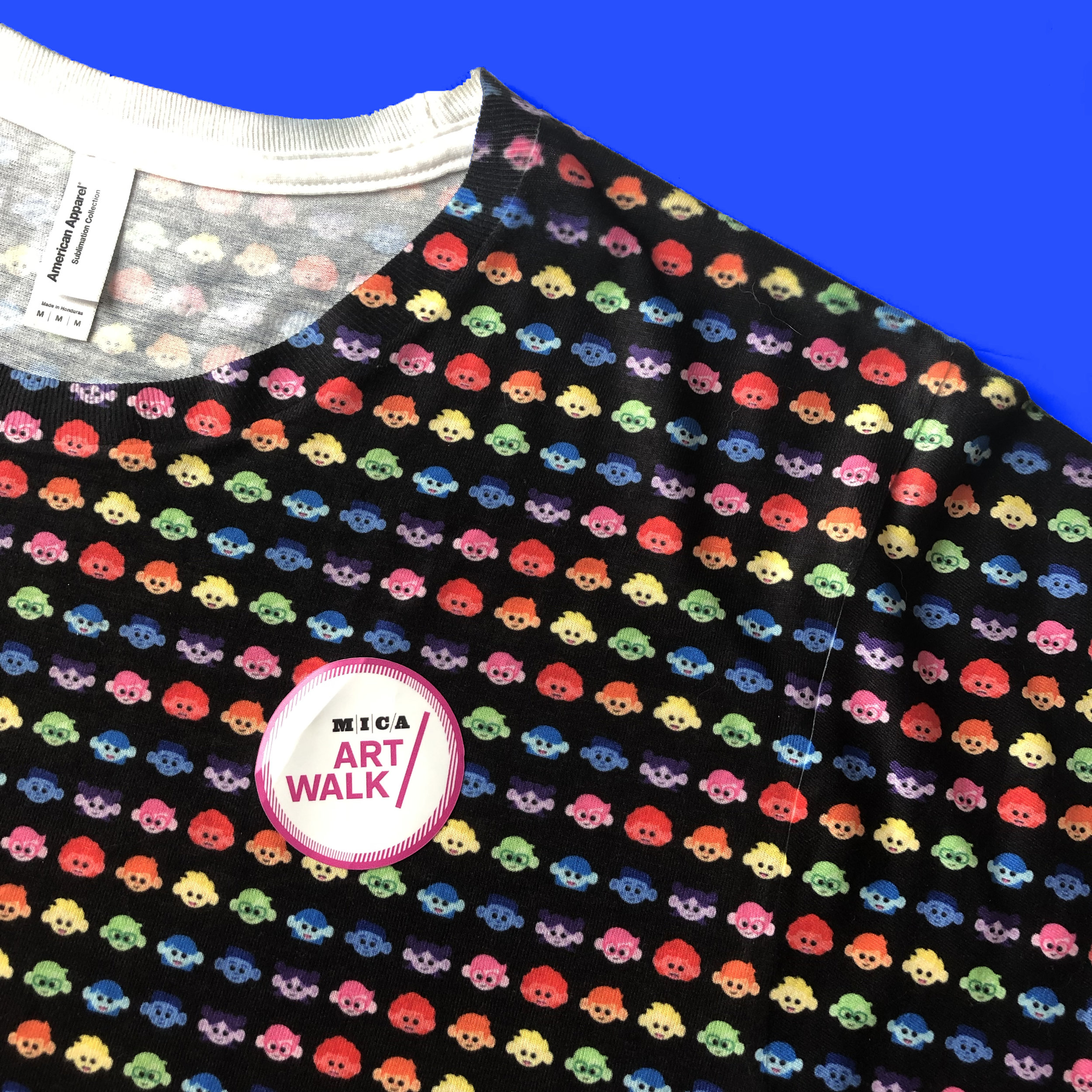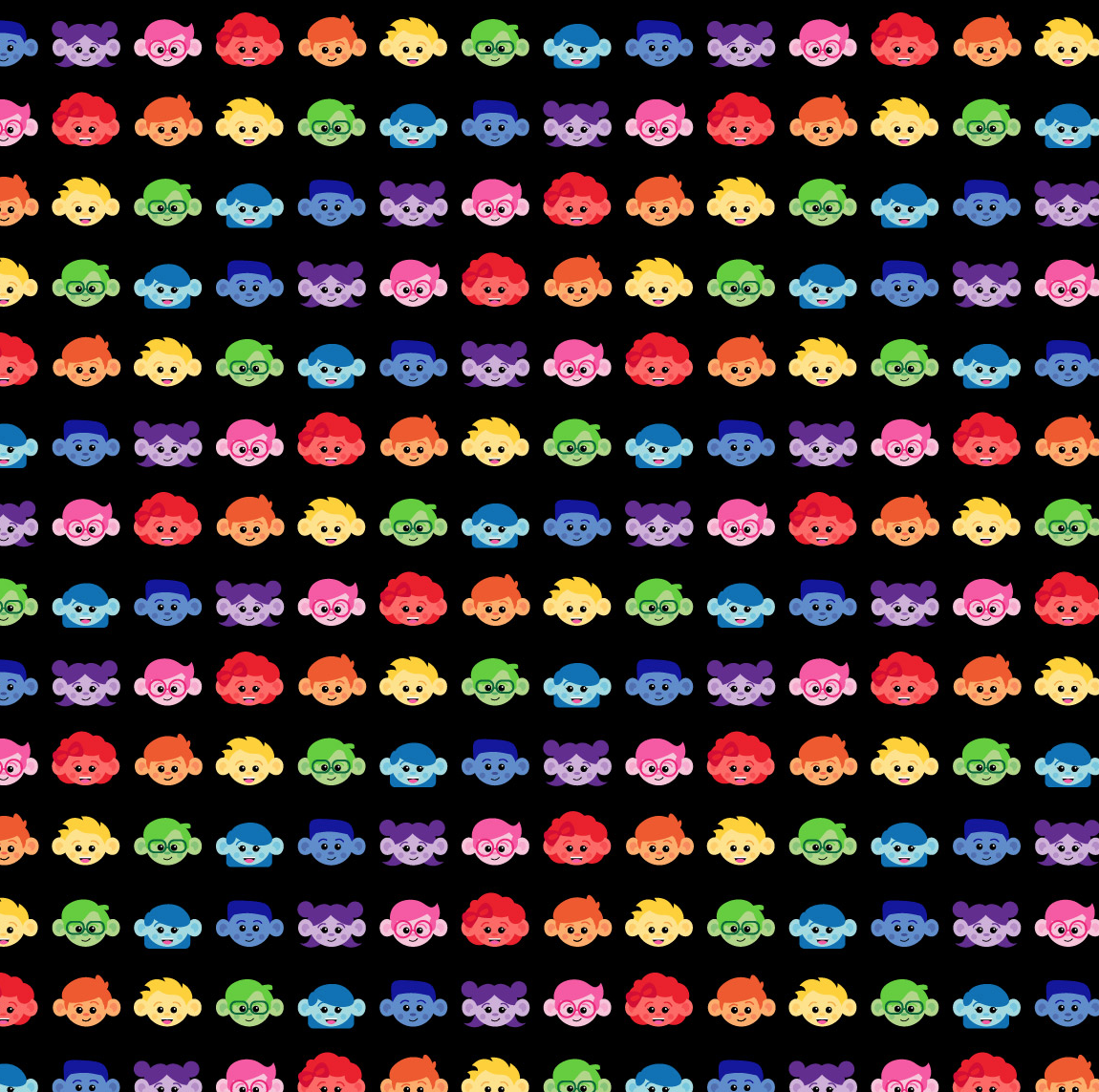meet the pride pals™!
My senior thesis, Pride Pals™, is a line of educational plush dolls inspired by queer history figures. Intended to be a positive introduction to queerness for younger kids, the dolls place casual emphasis on a diverse, queer cast of characters in an appropriate, non-sexualized manner in order to help kids recognize, understand and be more comfortable in their possible queer identities as well as normalize the idea of societal queerness in the minds of all young kids.
Each doll comes with a digitally illustrated educational storybook that showcases the life and achievements of the coordinating figure the doll was inspired by. Being that queer history is not included in the curriculums of most schools–especially at the younger levels–I wanted to make sure this project could supplement that gap.
Selected figures. From left to right: Gilbert Baker, Marsha P. Johnson, Alan Turing, Freddie Mercury, Oscar Wilde, Sally Ride, Bayard Rustin, Frida Kahlo.
During my selection process, it was very important to me that I chose a fair mix between people who were recognized specifically for their strides within the queer community during their lifetime–i.e. Marsha and Gilbert–and those who happened to be queer while also advancing general society as well, whether that be through advances in science, art, music, or general activism. This way, the dolls casually showcase queerness in a way that shows kids that they can not only accomplish incredible things while being queer but also reminds us that while queerness is an important piece of one’s identity, it is not always inherently linked to one’s legacy or an indicator of their societal worth. While the dolls are not intended to necessarily look like or represent “child versions” of the selected queer figures, each doll takes the name and general interests/personality traits of their selected individual.
Initial analogue doll sketches. From left to right: Gilbert, Marsha, Alan, Freddie, Oscar, Sally, Bayard, Frida.
Pride Pals™ are intended to be loved by all children, regardless of queer or non-queer identity, gender, or race. Keeping this in mind, each doll was assigned a different color from the Pride flag–originally designed by Gilbert Baker–that would act as their general color palette and skin tone in order to avoid the often skewed race ratio in most doll lines that usually feature mostly white/light-skinned characters while only including one or two POC. By giving each character a monochromatic palette and eliminating “real” skin tones altogether, kids are able to better project their own identities and personalities onto any of the dolls, rather than feeling confined to only get ones that they feel best represent them off the bat. The original colors were also assigned specific meanings by Baker (pink = love/sexuality, red = liveliness, orange = healing, yellow = sunshine, green = nature, turquoise = magical, indigo = serenity and purple = spirit) and these meanings were also used to inspire the general characteristics of each Pride Pal.
Timeline of Gilbert’s creation, from initial sketch to final product. Each doll was digitally designed and printed on super-soft fleece fabric, front and back.
Final digital sketches.
To read a notebook, click on the corresponding image at the end of each row!
Pride Pals on display during MICA’s annual ArtWalk and the custom t-shirt I designed to wear for the event. Pride Pals™ was given the Outstanding Degree Project Award from the MICA Graphic Design Department faculty. A big thanks to Alison Baskerville ‘17 for helping me in the doll’s construction.



